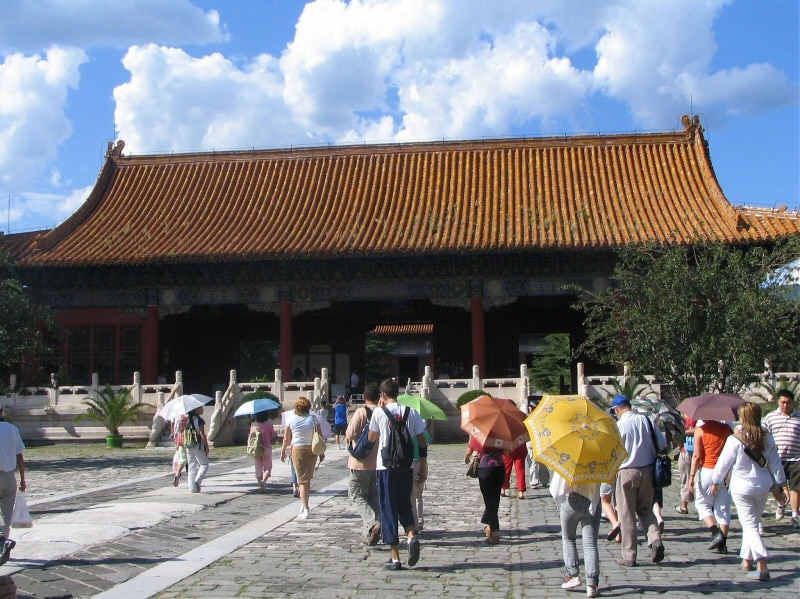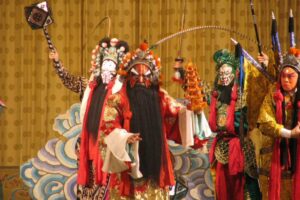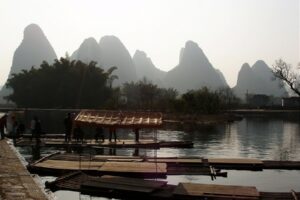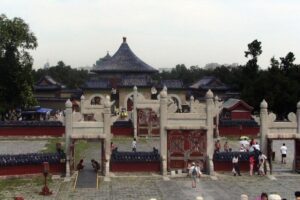On the highway that from Beijing / Beijing heads towards the northwest, on the way to the section of the Great Wall in Badaling, about 50 kilometers from the Chinese capital, we have the opportunity to visit the Ming Tombs.
It is an area located next to the mountains where historically Thirteen emperors of the Ming Dynasty were buried. Restoration work has actually only been carried out on three of the tombs, and there is only the possibility of visiting two of them.
The Ming Dynasty ruled China from 1368 to 1644. Although the first of its emperors was buried in the city of Nanjing, the first grave of the large complex located north of Peking / Beijing, known as Chang Ling, began to be built in 1409 by the third emperor.
When we turn off the highway to reach the large area where the Ming Tombs, after passing a large door of the characteristic red color, we find a first pavilion and after it, we access the Sacred Path, on both sides of which there are numerous statues of animals, such as camels, elephants or lions, and human figures.
There are two tombs that can be visited. The main one is Chang Ling, precisely the first of the tombs built in the Ming Tombs complex, which is located four kilometers away from the entrance to the complex.
In reality we will see a configuration similar to that of the Forbidden City, but in miniature, with the same type of buildings and architecture. Behind an access door, we will find two successive pavilions, and a small tower from which we will have a view. panoramic view of the entire Ming Tombs area.
Therefore, if we have been to the Forbidden City beforehand, the visit to the Ming Tombs It can be somewhat frustrating.
The main attraction of the visit is the large pavilion, very similar to the Hall of Supreme Harmony of the Forbidden City. In it we will see various objects and ornaments found in the Ming Tombs, from jewelry and ceramics, to weapons.
La another grave that can be visited is known as Din Ling, where Emperor Wan Li was buried in 1620. This time we will find a “palace” buried 27 meters deep, where we will go down a long staircase. It is a chamber decorated in marble and divided into five rooms.

















Comment